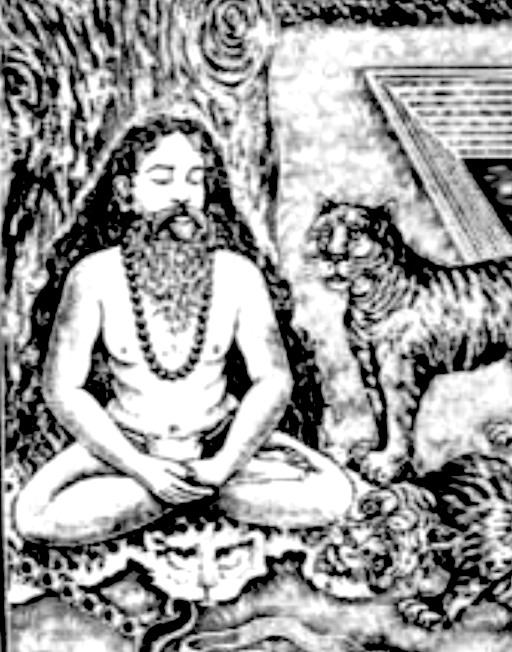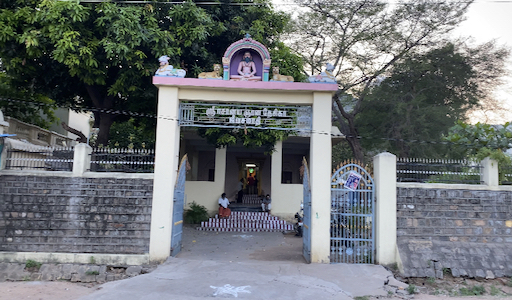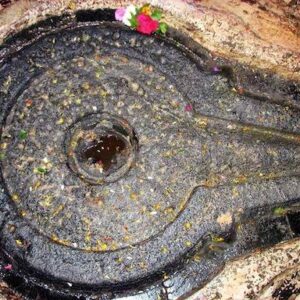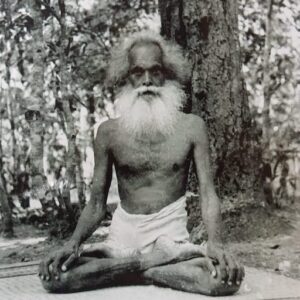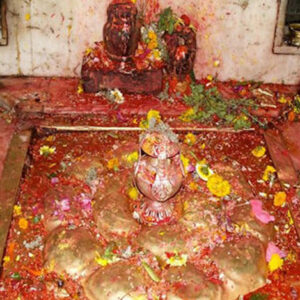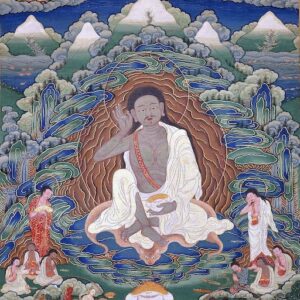This is the jeevasamadhi of Isanya Jnana Desikar.
There is place to sit and meditate. You can go into meditative states here effortlessly.
How to get there:
The temple is located Eastern side of Arunachala hill, Thiruvannamalai.
Map: https://goo.gl/maps/7W4wuf99avfscqm9A
About Isanya Jnana Desikar
Isanya Desikar, whose math is located just outside Tiruvannamalai on the old pradakshina road, was a distinguished yogi who, like many before and after him, have felt the spiritual call of Arunachala. He came and settled at the foot of the mountain quite late in his life, but nevertheless, by virtue of his intense and personal relationship with Arunachaleswara, he can still be regarded as one of the major saints of Arunachala.
He was born in 1750 in a small village called Rayavelur, which is located near the River Palar in northern Tamil Nadu. His parents, Tiruneelakantha Desikar and Uma Parvathi, belonged to the local farming community. Prior to Isanya Desikar’s birth his parents had been unable to produce a son for many years. To solve this problem they had prayed to Lord Murugan at Arunachala and had asked him to bless them with a son. When their prayers were answered, the child was given the name of Kandappan, one of the many names of Lord Murugan.
It soon became clear that he was a precocious child both spiritually and intellectually. When he was first sent to school, he astounded his teachers by reciting the lessons before they had even been taught. Then, while the other boys struggled to catch up, he would sit quietly in meditation. His father gave him Siva diksha at the age of seven and then bestowed the title of ‘Desikar’ on him. The title, which may have been a hereditary one, entitled and empowered the son to carry out the duties and functions of a guru.
Isanya Desikar (a name he acquired much later in life) spent most of his childhood uneventfully, mostly sitting in meditation in his family house. When he reached the age of sixteen, his father decided it was time for him to get married. While Tiruneelakantha was looking for a bride from amongst his own relatives, Isanya Desikar, who had no inclination to get married, appealed to his mother.
‘I don’t want to become a samsari. We have been the slaves of Lord Siva since the days of our distant ancestors. My mind longs to see all the holy places associated with Him. Instead of marrying me off, give me permission to go on a pilgrimage.’
His mother granted his request and soon afterwards he set off on an extensive South India yatra. It seems he never went home again.
A major turning point in his life occurred at Chidambaram. After he had visited the temple there and had darshan of Lord Nataraja, he went to visit Sri Mouna Swami, a local saint who was reputed to be a siddha purusha. Mouna Swami lived on the northern bank of the Ayi tank in Chidambaram and appeared to be immersed in samadhi for most of the time. Isanya Desikar felt an immediate attraction to him, so much so that he decided to stay on in Chidambaram in the hope of getting both initiation into sannyasa and upadesa (teachings) from him. For some time Isanya Desikar begged for his food and had darshan of Mouna Swami twice a day, but the Swami himself appeared to pay little attention to him. Feeling that the Swami was ignoring him because he was not yet a mature enough devotee, Isanya Desikar decided that he would try to compensate for this lack by giving Mouna Swami a display of his earnestness. He took off all his clothes except for his loincloth and went and stood before Mouna Swami during one of the heavy winter rains. When Mouna Swami saw him standing there, undaunted by the heavy rain and without the least trace of a shiver on his bare body, he took the blanket that was covering his own body and wrapped it around the shoulders of Isanya Desikar. Then, to Isanya Desikar’s delight, he gave him the desired initiation and upadesa and afterwards put him into a state of deep meditation. To celebrate his acceptance, Isanya Desikar composed a five-verse poem in praise of Mouna Swami. In the first verse he extolled the greatness of his new teacher:
Ever-perfect one! You have manifested in the world as the one who is steeped in the pure bliss of the experience of the expansive infinity that has no attributes. [You have manifested] as the Self-realised silence and as the embodiment of truth and grace to bring harmony among various beliefs. I, keeping my head at the feet of your devotees, regard you as the Lord himself who dances in space at Chidambaram and who is worshipped by the three worlds…
In the fifth and final verse, Isanya Desikar acknowledges that he cannot attain liberation through his own efforts or through his religious knowledge. He therefore requests Mouna Swami to bestow his grace on him and grant him absorption in the Self:
O Guru possessing Supreme Knowledge, known as the silent Guru living on the banks of the Ayi tank, what is the use of studying the scriptures and the many different arts? Of what avail is an extensive study of Vedanta and Siddhanta, expounding their meaning, or following he ways of various religions? It is easy to transcend samsara? Bless me with a supremely blissful absorption in the Self, in which one can see the emergence of your effulgent grace.
It is not recorded how long Isanya Desikar spent with Mouna Swami. It may well have been several years because, when he finally decided to leave Chidambaram to carry on with his pilgrimage, he had the long matted hair of an ascetic yogi and the reputation for being a siddha, a yogi with great powers. His biographer, C. Subbiah Swamigal, reports that he travelled stark naked and carried only a few insignia which marked him out as being a member of the South Indian order of siddha sannyasins.
After leaving Chidambaram he wandered around for some time and met at least two famous saints: a fellow siddha, Dakshinamurti Swami, who lived at Tiruvarur and a man called Ugandalinga Jnana Desikar, a Guru and a Brahmanishta who lived in a village called Sikkal near Nagappattinam. When his wanderlust had abated, he decided to settle down and undergo a long period of solitary meditation. He soon found a suitable place – a large uninhabited cave on a small hill. The nearest town was Vettavalam, which is only a few miles from Tiruvannamalai, and the nearest village, a settlement called Pakkam, supplied him with his few bodily needs. He spent many years in this cave, apparently trying to immerse himself in the state of nirvikalpa samadhi.
Read More:
https://www.davidgodman.org/isanya-jnana-desikar/
